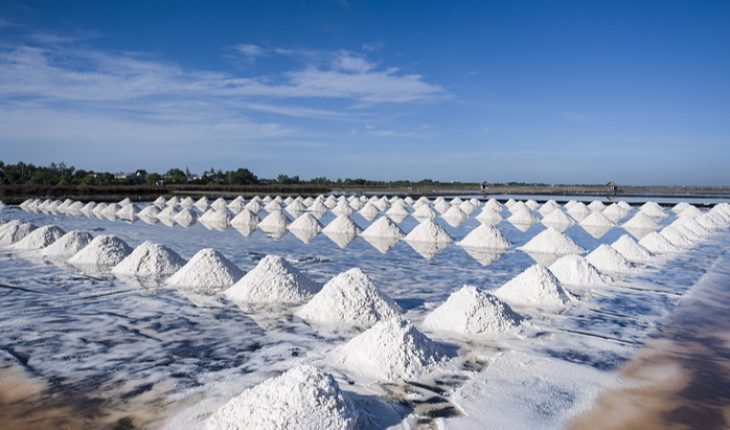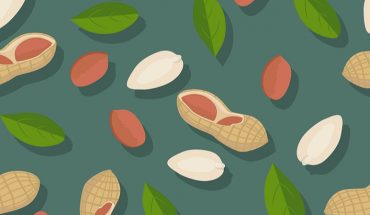Salt has been used as a flavour enhancer for thousands of years, but unfortunately, eating too much salt can have serious health consequences. Salt is one of the most important factors affecting high blood pressure, which raises the risk of stroke and heart attack.
The maximum recommended allowance is 6 grams of salt per day, about a teaspoon. We eat around 9 grams a day.
Although you should cut down on salt you add to food, a lot of salt in our diet is hidden. For example, three-quarters of the salt we eat comes from processed food.
Luckily, even a small reduction in salt intake can have immediate beneficial effects. Research has shown that reducing average salt intake to 6 grams a day would prevent 70,000 strokes and heart attacks a year.
Thanks to an ongoing campaign by the government’s Food Standards Agency to reduce salt in processed food, many foods now have significantly less salt added than a few years ago and lower salt alternatives exist for nearly all categories of foods.
SALT SINNER White Bread:
The salt intake in some bread is so high it is killing 7,000 people a year, according to Consensus Action on Salt and Health (CASH). When they checked 138 wrapped loaves, one third had salt content above the recommended levels. The Food Standards Agency’s target salt level for bread is 1.1g per 100g.
CASH says that any bread that contains more than 1.25g of salt per 100g should be boycotted, as lower salt alternatives exist.
SALT SINNER Cereal:
Cereals tend to be very high in salt. However, salt levels are falling. Most cornflakes in the UK now have around two-thirds the amount of salt they contained in 2004, (a 30 per cent reduction). There are a few breakfast cereals, which only contain a trace of sodium. These include some mueslis, porridge, shredded wheat, and puffed wheat.
SALT SINNER Baked beans:
Salt content varies widely between brands but an adult portion of standard baked beans contains on average 2.7g salt, which is equal to 45 per cent of the recommended maximum daily intake of salt per day for an adult. Healthy eating baked beans contain about 60 per cent of the amount of salt and sugar in standard baked beans.
Heinz, one of the biggest manufacturers, has reduced the salt content of its beans to meet the Food Standards Agency’s target.
SALT SINNER Tinned soup:
One tin of tomato soup (400g) contains around 4g of salt, or two thirds of the entire maximum allowance. Combine this with a couple of slices of toast, and you have your salt intake for the whole day.
Fresh soups tend to contain much less salt than tinned varieties, but not always. Read the labels
SALT SINNER Crisps:
According to the Food Commission, the salt content of crisps has nearly doubled over the past 25 years, and some products aimed at children contain more salt in one serving than the recommended intake for a whole day.
Crisps made from vegetables, such as parsnip and sweet potato, are becoming increasingly popular but many of these products contain moderate to high levels
SALT SINNER Cheese:
In cheese-making, the addition of salt stops the growth of harmful micro-organisms. It can be difficult to judge salt content because nearly three quarters of the cheeses examined in a survey did not show salt levels per serving on their packs.
Dairylea Light cheese slices for example, do lie within the FSA’s new salt targets for the dairy industry, but that is still a whopping 2.9g per 100g.
SALT SINNER Buns/pastries/cakes
Salt in these products can be very high, but it is masked by the sugar content. A typical digestive biscuit contains 0.6g of salt. Sweet biscuits are not the only culprits; one oatcake contains almost 0.5g of salt. Salt is added to biscuits and cakes as a flavour enhancer and preservative – so they have a longer shelf-life. Many boxed and pre-packed cakes contain between 0.5g and 1g of salt per portion.
SALT SINNER Meat products, ham, sausages and bacon
Most meat products contain salt, added both for flavour and to inhibit bacterial growth. The combination of salt and nitrite, used in curing, ensures that bacon and ham have a longer shelf-life. Peperami sticks, highlighted in March 2005, still have around 1.0g of salt per 25g stick, 4.0g salt per 100g.
SALT SINNER cooking sauces for pasta
Cooking sauces vary widely. There are lower-salt choices on the supermarket shelves just don’t rely on them to jump out and tell you – you will need to look at the nutritional information.
SALT SINNER Stock Cubes:
On a weight for weight basis stock cubes are second only to table salt for their very high sodium content – one 5g stock cube contains around 2g of salt. Stock cubes can also contain artificial flavours (usually monosodium glutamate, which contains sodium). Look out for reduced salt versions or make your own stock by simmering meat or fish bones or vegetables along with fresh herbs and black pepper to produce a very pure and natural tasting low salt stock.
Salt or sodium?
Sodium is a mineral that combines with chlorine to form salt. Most food labels will give you the figure for sodium, but many are also putting on the figure for salt too.
If a food label tells you that ‘sodium’ is an ingredient, multiply the given number by 2.5 to work out exactly how much salt it contains.
0.4g of sodium x 2.5 = 1g of salt.
Why does salt cause high blood pressure?
On a high-salt diet, the kidneys are under increased strain to eliminate salt from the body. Over a long period of time, this causes fluid to be retained in the body, resulting in increased blood pressure. The heart has to pump a greater volume of blood through vessels, which have a higher resistance to flow, leading to stroke and heart attacks.
Nigel’s top tips for flavouring food without salt.
- Add fresh herbs to pasta dishes, vegetables and meat.
- Use garlic, ginger, chilli and lime in stir-fries.
- Roast vegetables such as red peppers, courgettes, fennel, parsnips and squash to bring out their flavour.
- Squeeze lemon juice onto fish or seafood.
- Make sauces using ripe flavoursome tomatoes and garlic.
- Use black pepper as seasoning.
- A rough guide to health food supplements - 17th January 2017
- The Winter-warming Curry Diet - 22nd October 2016
- Salt sinners - 18th October 2016






